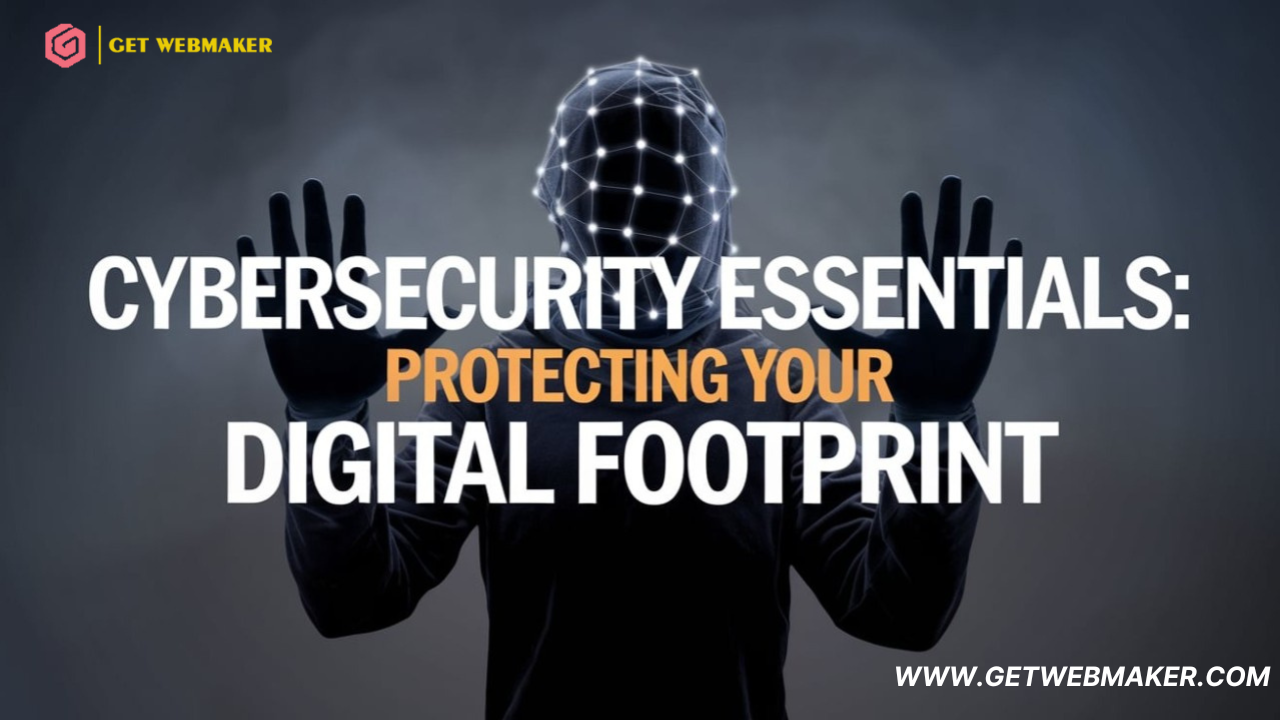Cybersecurity: Protecting Your Digital Footprint in 2024

Cybersecurity: Protecting Your Digital Footprint in 2024
In today's digital age, our lives are increasingly intertwined with the internet. From shopping and socializing to managing finances and work, everything we do leaves a digital footprint. With the rise in cybercrime and online threats, cybersecurity has become more important than ever in safeguarding our personal and professional information.
In this blog, we'll discuss essential tips and strategies to protect your digital footprint in 2024.
What Is a Digital Footprint?
Your digital footprint is the trail of data you leave behind as you interact with the internet. This includes everything from the websites you visit to the social media posts you make, the emails you send, and even the data collected by apps and services. While some of this information may be harmless, it can be used maliciously by cybercriminals if not properly secured.
Why Cybersecurity Is Crucial in 2024
As we move deeper into the digital era, the volume of sensitive data shared online has increased significantly. Cyberattacks such as data breaches, phishing, and identity theft are growing threats, with businesses and individuals alike becoming frequent targets. The financial and personal repercussions of a successful cyberattack can be devastating, making cybersecurity an essential priority.
Tips to Protect Your Digital Footprint
1. Use Strong, Unique Passwords
One of the simplest and most effective ways to secure your digital footprint is by using strong passwords. Avoid using the same password across multiple sites, and make sure your passwords are at least 12 characters long, combining numbers, symbols, and both uppercase and lowercase letters. Password managers like LastPass and Dashlane can help you keep track of complex passwords.
2. Enable Two-Factor Authentication (2FA)
Two-factor authentication (2FA) adds an extra layer of security to your accounts. With 2FA, even if someone gets access to your password, they won’t be able to log in without the second verification step, such as a code sent to your phone or an authentication app.
3. Stay Up-to-Date with Software Updates
Cybercriminals often exploit vulnerabilities in outdated software to launch attacks. Always ensure your operating system, apps, and antivirus software are up-to-date. Enable automatic updates where possible to protect against the latest threats.
4. Be Cautious with Public Wi-Fi
While public Wi-Fi may seem convenient, it can be a hotbed for cyberattacks. Avoid accessing sensitive information, such as banking details, while using public Wi-Fi. If you must, use a Virtual Private Network (VPN) to encrypt your data and protect your privacy.
5. Secure Your Social Media Accounts
Your social media profiles are a goldmine for cybercriminals. Review your privacy settings regularly and limit the amount of personal information you share. Avoid sharing sensitive details like your location or upcoming travel plans that could be used for identity theft or physical theft.
6. Beware of Phishing Scams
Phishing attacks involve tricking individuals into revealing personal information by impersonating legitimate entities, like banks or popular services. Always verify the authenticity of any email, link, or message before clicking on it. Avoid clicking on suspicious links, and never share personal information unless you’re sure of the sender’s identity.
How to Implement Cybersecurity Best Practices on a Broader Scale
While individual efforts are crucial, businesses and organizations must also prioritize cybersecurity to protect their employees and customers. This includes conducting regular security audits, investing in enterprise-grade security software, and ensuring that all employees are trained on cybersecurity protocols.
The Future of Cybersecurity
As technology continues to evolve, so too do the methods used by cybercriminals. In 2024 and beyond, we can expect to see more advanced threats, including AI-driven cyberattacks. However, new advancements in cybersecurity, such as AI-powered security tools and blockchain technology, are also emerging to help combat these threats.
Conclusion
In the ever-evolving digital landscape, protecting your digital footprint is more critical than ever. By adopting strong cybersecurity practices and staying informed about potential threats, you can safeguard your personal and professional information from cybercriminals. Remember, cybersecurity is not just about preventing attacks—it’s about being proactive and vigilant in the face of an increasingly complex digital world.
